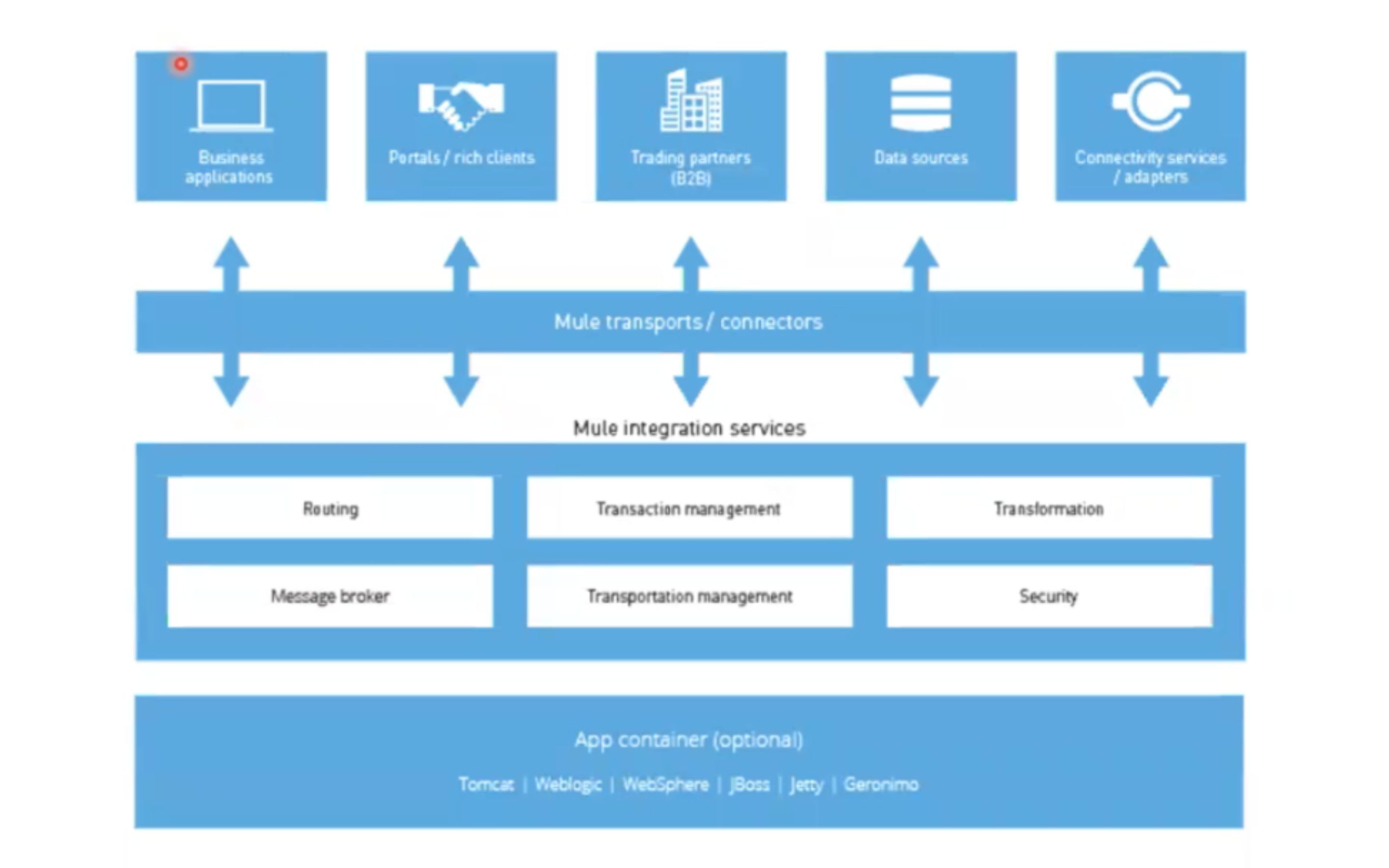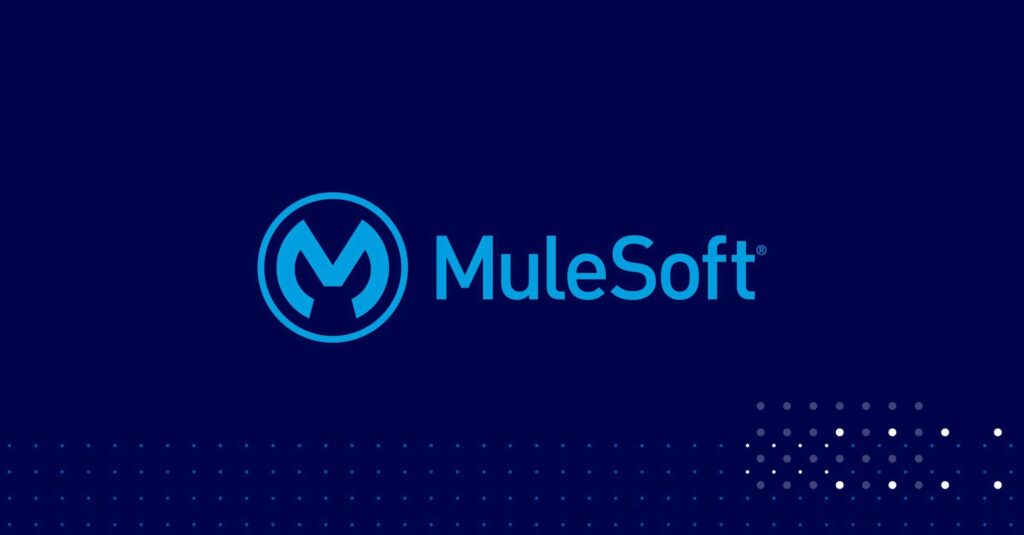MuleSoft can connect any system, application, data, or device to unleash the power of Customer 360. The combined power of MuleSoft, the #1 integration platform, and Salesforce, the #1 CRM, enables customers to accelerate digital transformation.
What is Mulesoft?
1. MuleSoft is a vendor that provides an integration platform to help businesses connect data, applications, and devices across on-premises and cloud computing environments.

2. MuleSoft unifies data to deliver a single view of the customer, automates business processes, and builds connected experiences. Each integration becomes a reusable building block using a modern API-led approach.
History of Mulesoft
MuleSoft was founded in 2006 by Ross Mason and Dave Rosenberg.
The company originally provided middleware and messaging and later expanded to provide an integration platform as a service (iPaaS) approach for companies through its main product, Anypoint Platform.
MuleSoft has been part of the Salesforce family since 2018, a software-as-a-service (SaaS) provider. Salesforce now uses MuleSoft technology as part of its Salesforce Integration Cloud.
- MuleSoft, a software-as-a-service (SaaS) provider, has been part of the Salesforce family since 2018. Salesforce now uses MuleSoft technology as part of its Salesforce Integration Cloud.
Innovation Takes on a New Urgency
Businesses need to handle more systems and data as they gradually transition to hybrid working, increasing the number of systems and data they must manage. As a result, integration becomes a roadblock to automation advancement that 96% of businesses find challenging to get beyond.
The 2022 Connectivity Benchmark report states that over the previous 12 months, organizations asked IT to complete 40% more projects on average. Organizations are expanding their IT spending (5.8% in 2021), but not at a rate that keeps up with the escalating business demands. This is causing the IT delivery gap for many businesses to expand.
The delivery gap widens when there are more digital transformation activities that need to be implemented. Most organizations still need help striking this balance; understanding how integration fuels digital transformation is the fundamental building block for overcoming this enormous issue.
MuleSoft automation tackles these issues by allowing customers to automate any process for any team. So, ‘What does MuleSoft do?’
What does MuleSoft do?
Let’s investigate the potent integration world.
Customers today demand connected interactions. They want to avoid seeing the junctions of your departments’ systems.
For more than two years now, MuleSoft has been a member of the Salesforce family and has been assisting businesses with their digital transformation by quickly linking all of their business systems.
Mulesoft aids your team’s quick adjustment to complexity in the workplace and frequent change. This makes it simple to combine data to give a single customer perspective and create connected experiences.
With MuleSoft RPA, the system has no-code capabilities for automating routine manual activities (robotic process automation). Data from any system, including Slack and MuleSoft Composer, may be readily connected. The new features are fully integrated into Salesforce Flow, a vast array of automation technologies used throughout the Customer 360 to boost productivity, offer unmatched experiences, and increase efficiency.
How is MuleSoft used with Salesforce?
It is without a doubt possible for Salesforce to eliminate data in various systems and give integrations—the core component of the customer experience—a priority when MuleSoft serves as the data link. In general, MuleSoft and Salesforce work well together to handle complicated interfaces and assist enterprises in developing a scalable and reliable integrated strategy.
MuleSoft performs the required transformations to those data sets, such as field mappings and field conversions, while Salesforce enforces validation standards for incoming data during real-time data retrieval. MuleSoft serves as the middleware for data translation, and Salesforce prepares the data ahead of time to prevent varying data interpretations and guarantee consistent data transformation.
MuleSoft and Salesforce are ground-breaking because MuleSoft can build APIs that link to any system, program, or data source. Because of this, Salesforce can more
easily obtain real-time data from many systems, whether on-premises or in the cloud and create a unified customer view on a single platform.

MuleSoft and Salesforce enable businesses to quickly build distinctive, connected experiences by unlocking data across systems, building scalable integration frameworks, and more. The opportunities for integration across various integration patterns, Salesforce products, and external systems are infinite. For example, integrated applications with Lightning Platform, Heroku, Slack, and Tableau can be developed to obtain a single customer view in Sales Cloud and Service Cloud. Various third-party systems are incorporated, and Salesforce Customer 360 is linked to legacy sources to synchronize order, invoice, and product information. MuleSoft makes it possible to do away with repetitive tasks, boosting staff productivity and lowering client expenses.
Introducing the Anypoint Platform
MuleSoft’s Anypoint Platform is a unified, single solution for iPaaS and full life-cycle API management. The Anypoint Platform consists of the following major components:
Components of Mulesoft’s Anypoint Platform

1. API Designer: a web-based, graphical tool that a developer can use to design and document an API and share that design with team members.
2. API Manager: An interface through which a developer can manage APIs and secure them via an API gateway.
3. Anypoint Studio: a graphic, Java-based design environment that a developer can use to deploy APIs to on-premises and cloud environments.
4. Anypoint Connectors Set of built-in connectors that a developer can use to integrate applications with thousands of third-party REST and SOAP services.
5. Anypoint Analytics: an analytics tool to track API metrics, such as performance and usage.
6. Anypoint Runtime Manager: A central console from which a developer can provision and monitor all resources deployed on the Anypoint Platform across hybrid cloud architectures.
7. Anypoint Exchange: a central hub that a team can use to store and access APIs, templates, connectors, documentation, and other resources.
8. Anypoint Monitoring: A dashboard that helps a development team monitor application health
9. Anypoint Visualizer: a graphical tool to map APIs and their dependencies in real-time.
10. CloudHub is a multi-tenant integration platform as a service (iPaaS) offering. CloudHub is a managed service, meaning a development team does not need to install or operate any hardware or software to use it.
ETL Tools

Implementing ETL-based integrations is frequently impossible as the IT environment shifts to the cloud due to a lack of visibility into the internals of cloud databases and apps. Additionally, as ETL solutions are largely batch-oriented, the move to the cloud means a greater value is put on real-time integration updates.
What Is Mule ESB?

Mule ESB is an enterprise service bus (ESB) platform that performs data and application interactions. With Mule ESB, developers can build multi-protocol integrations between systems and services, both on-premises and in the cloud.
The essential advantage of an ESB is that it allows different applications to communicate with each other by acting as a transit system for carrying data between applications within your
enterprise or across the Internet.
ETL
On-demand data transfer
Operates on batches of operations
ETL cannot time-out, delay, or issue transactions to front-office applications during transformation processes.
Can transfer historical records
Real-time data transfer
ESB
Real-time data transfer
Operates at the single-business transaction level
ESB can time and delay data in queues, escalating information to the correct receiver for that piece of content.
Deals only with current records.

ESB & ESL - Common Functions
Orchestration: Composing several existing fine-grained components into a single higher-order composite service This can be done to achieve the appropriate “granularity” of
services and sequence of data transfers, and promote reuse and manageability of the underlying components.
Transformation: Data transformation between specific data formats is required. An example would be transforming between CSV, XML, and JSON.
Transportation: transport protocol negotiation between multiple formats (such as HTTP, JMS, and JDBC).
Mediation: Providing multiple interfaces to the same component allows for multiple channels or backward compatibility.
Non-functional consistency includes security, error handling, monitoring policies, etc.
In conclusion, MuleSoft offers numerous solutions to help businesses overcome integration challenges and transform themselves into an efficient new enterprise in which countless disparate systems and applications can seamlessly communicate. Typical ETL tools are limited in their ability to serve the requirements of the new enterprise, but an enterprise service bus can provide real-time, high-performance, scalable operation capabilities.
We hope we have covered everything needed to introduce you to “Salesforce Mulesoft”. To learn more and see a demo, watch our video on Mulesoft. Let us know what you think in the comments below!
Let us know your thoughts!
For more blogs: https://areya.tech/blogs/
To know more: connect with us today!
Contact: [email protected]









